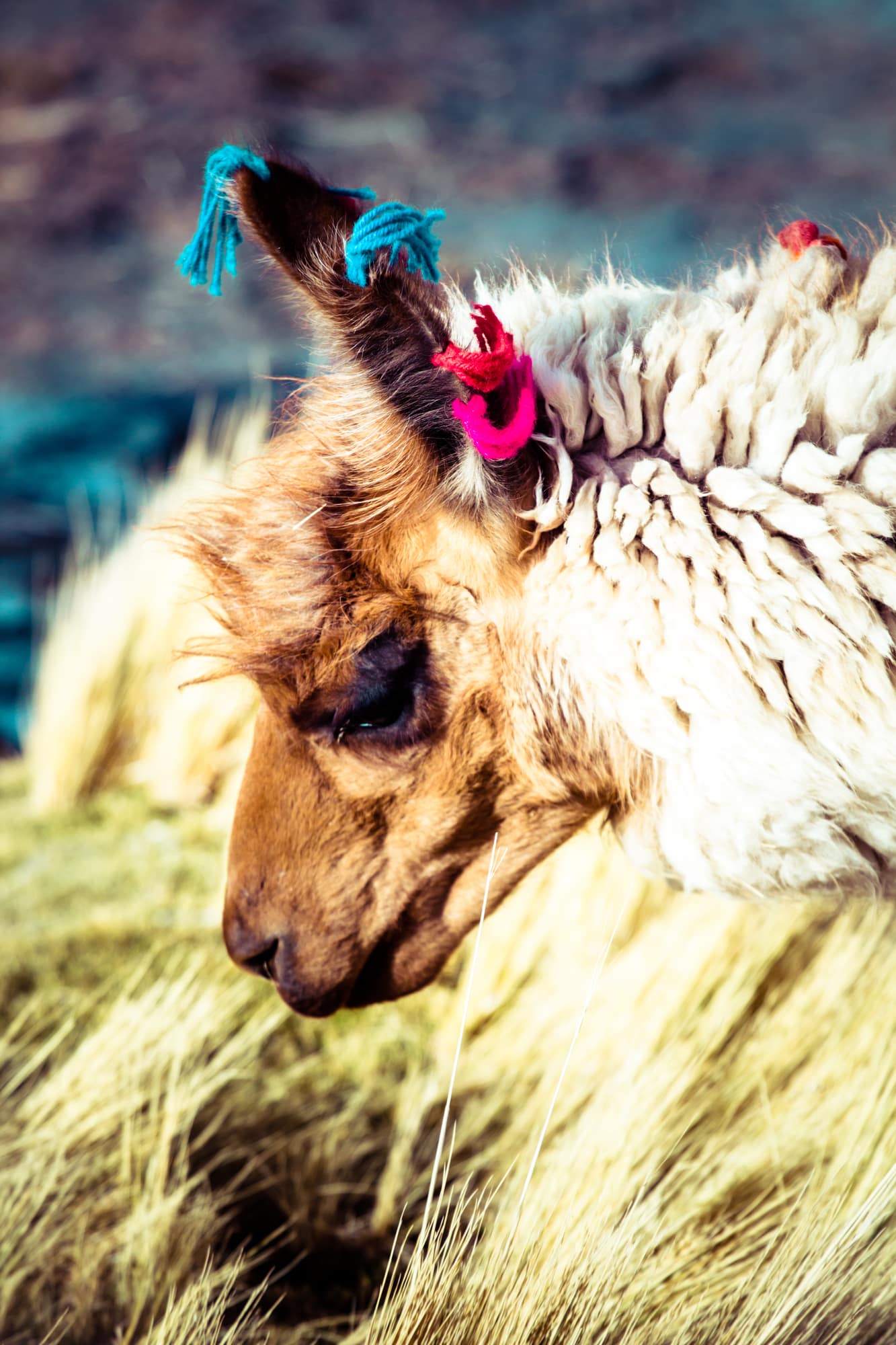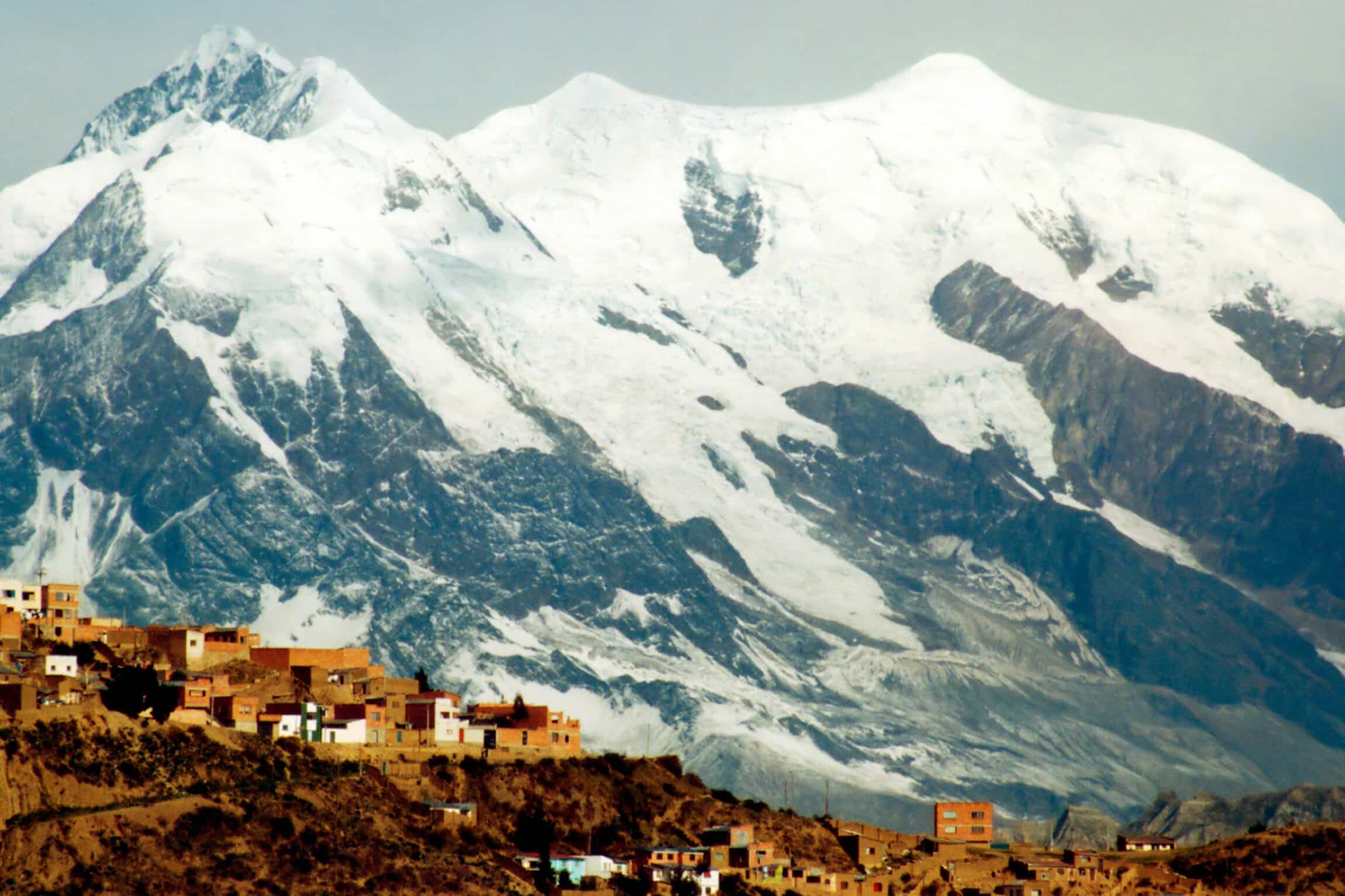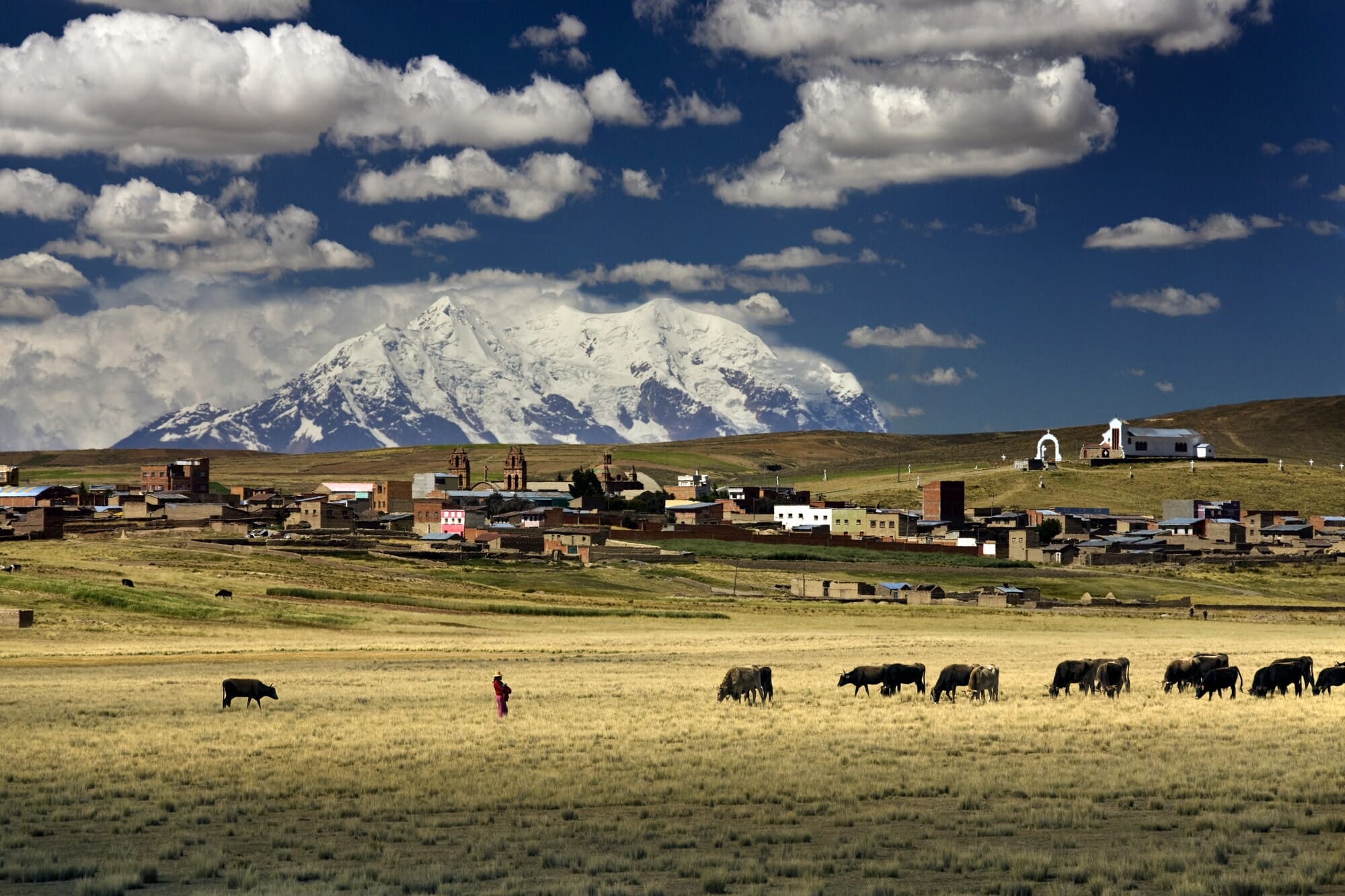Bolivia from the peaks of the Andes to lush rain forests
Bolivia from the peaks of the Andes to lush rain forests is one of the most diverse and intriguing nations in South America.
This landlocked country is surrounded by Brazil, Paraguay, Argentina and Chile, rewards adventurous travelers and encompasses everything that outsiders find most exotic and mysterious on the continent.
From the majestic icy peaks and shady deserts of the Andes to the lush rain forests and vast savannas of the Amazon basin, Bolivia encompasses an amazing variety of landscapes and climates. This mystical terrain has dozens of impressive attractions, such as pans from another world, ancient Inca trails and towering volcanic peaks. Landlocked in the remote heart of South America, Bolivia rewards adventurous travelers and encompasses everything that outsiders find most exotic and mysterious on the continent.
The cultural diversity and ethnic composition of the country are equally fascinating. Three centuries of colonial rule have left their mark on the language, religion and architecture of the nation, but this is essentially little more than an appearance that covers indigenous cultural traditions that go back long before the arrival of the Spaniards.
Bolivia offers a lot for the adventure seeker, as well as for those who intend to explore something new and almost never seen.
Things to do in Bolivia
Dare to ride a bike on “Death Road”
Would you dare to ride a bike on Death Road?
What used to be called the most dangerous road in the world is now the most important thing for emotion seekers in Bolivia.
In the 1980s, this 64 km road that connects La Paz with Coroico reported an average of 200-300 deaths per year. Drunk drivers, narrow roads, sharp bends and forces of nature were some of the reasons that led to the road being called “Road of Death” or “Road of Death”.
In 2008, a new road opened that attracted most vehicles, leaving Death Road as a popular tourist attraction. The road is bumpy, picturesque and almost completely downhill. Glide along the edge of a cliff, ride under a small waterfall and don’t forget to take a picture on the iconic cliff covered in ferns.
The numerous tourism agencies in La Paz offer the daredevils the opportunity to ride a bike along the scenic mountain road, and if you survive, you will even be rewarded with a survivor shirt!
Special rules apply on the Yungas road. While the rest of Bolivia drives on the right side, here the vehicles drive on the left. A driver on the left has a better view of the roadside. In addition, descending vehicles never have the right of way and must move towards the outer edge of the road. This forces fast vehicles to stop so that the passage can be negotiated safely.
Explore the Amazon basin
From sloths to squirrel monkeys, the variety of wildlife found in the northern region of Bolivia makes it one of the most diverse ecosystems in the world.
The Amazon basin extends into the northern region of Bolivia and is easily accessible by public transport from the major cities to its main city, Rurrenabaque. Climb aboard one of the boats waiting to take travelers to the stilt houses on the river, before venturing upstream for piranha fishing, anaconda hunting and swimming with pink river dolphins.
Visit Salar de Uyuni
Spread over 11,000 square kilometers, Salar de Uyuni is the largest salt pan in the world. An endless sheet of hexagonal tiles (created by the crystalline nature of salt), dotted with pyramids of salt, the salt pans of Bolivia are a dazzling display of the magic of nature.
Despite the desert drought, freezing night temperatures and the fierce desert sun, this landscape is not without life. Pink flamingos, ancient cacti and rare hummingbirds all live in the Salar de Uyuni.
During the rainy season, the salty desert turns into a huge salt lake, although one that is only six to twenty inches deep, which can be traveled by boat or truck. During this period, the shallow salt lake perfectly reflects the sky, creating bizarre illusions of infinity. In the middle of this seemingly endless salt lake is a hotel built entirely with – of course – salt.
It is also worth traveling to the nearby Laguna Colorado and Laguna Verde. Laguna Colorado is a red-toned lake filled with thousands of pink flamingos, while Laguna Verde is a blue-green salt lake at the foot of the Licancabur volcano. Its changing water color is caused by copper sediments and microorganisms that live inside the lake.
Watch the sunset in Valle de la Luna
The Valle de la Luna is what remains of a mountain of clay and sandstone that has been affected over time by strong winds and rains and totally one of the best things to do in Bolivia (especially if you like wonderful landscapes).
Today it looks like a maze of canyons and stalagmites and is truly unique and bizarre. Apparently, although I’m still not too sure to believe it, but, apparently, Neil Armstrong gave him his name!
Go on a trekking in the valley, explore the area and always go with an experienced guide who is familiar with the climate and geography. No one wants to get lost here. The valley is about 15 miles from San Pedro and is easily accessible by car or guide.
If you feel even more adventurous, you can rent a bike to do the route, prepared only for many dusty, hilly and gravel-filled slopes that make it quite challenging.
Cross Isla del Sol
The best way to experience this island is to stay overnight, but if you have little time, you can also take a day trip from Copacabana.
Usually, what happens is that your boat (or guide) will leave you at one end of the island and pick you up right on the other side. The walk is lovely and will take you for most of the day, so you should be prepared for a rather heavy day.
Obviously, pack responsibly with plenty of water and some money in the pocket for restaurants towards the end. Las Velas is definitely the favorite!
Trekking in the mountains in the Andes
The Andes mountain range holds some of the most majestic peaks in the world, including Mount Aconcagua – which marks the highest point in the southern hemisphere and known as one of the seven peaks. But you don’t have to be super fit to tackle some of the peaks that rise to over 5,000 feet high. Whether you are a beginner or a novice hiker, there is a mountain with your name on it.
One of the most popular climbs is Huayna Potosí, thanks to its ease of access and its sexy height of 6,000 meters, which earns the rights to boast for outdoor adventurers. Illimani’s distinct profile is just as enticing to climb and can be spotted in the distance from La Paz.
Follow in the footsteps of Che Guevara
Che Guevara has made his way through history as a revolutionary, socialist and activist, yet few know him as the ambitious traveler he was. The possibility of following in his footsteps is found in one of the most unusual regions of Bolivia, marking an iconic point on the Che Guevara Trail.
With less than 20 houses, the dusty village of La Higuera is the last place you’d expect to have once hosted a revolution leader. But it was in this unsuspecting village that the life of Che Guevara ended, after he was executed in the local school.
More than 50 years after his death, people from all over the world continue to travel to the area to pay their respects.
Light a dynamite stick in Potosi
For those who make the journey in the high Potosi of Bolivia, there are several delicacies in store:
First of all, not only is it the highest city in Bolivia, but one of the highest cities in the world.
Secondly, if you survived soroche (altitude sickness), there is another survival activity to test your endurance: a tour of deep mines.
These mines are located in the hills on the edge of Potosi, overlooking the city. Once it was the silver mining capital of the world. You meet with your guide, you can have a shot (often mandatory) of strong Bolivian alcohol, a rough ride in the mines and then in you.
Here you will find very narrow, claustrophobic and dangerous and stimulating mines as you go through the corners and cracks to meet one of the miners. They are guys who work hard and spend most of their lives in these mines.
During the tour you can bring gifts to these powerful miners, see how hard their lives are and then you can light up the dynamite and make it explode alone in the mountains!
This is not a trip for the faint of heart and a real travel gem for anyone with backpacks in Bolivia.
Feel like you’re on another planet in Badlands of Tupiza
olivia offers surreal views from the bucket, and the southern Badlands of Tupiza are no exception. Even the name sounds desolate, evoking images of the Wild West.

Lama on the Laguna Colorada, Bolivia
The city of Tupiza itself, with its frontier atmosphere, is a popular stop for those heading to Argentina or the Uyuni Salt Pans, but the real advantage is the surrounding landscape.
Laguna Colorada
Somewhere around 14,000 feet above sea level is Laguna Colorada, the beautiful white-spotted red lake of Bolivia. Part of Bolivia’s salty wonders of the plateau, lake and its almost extinct flamingos attracts visitors in a bizarre landscape that is otherworldly.
The colors of the Laguna Colorada stand out immediately after seeing it. Stained with red algae and other microorganisms, the water has a deep red-orange tinge. Perfectly contrasted, the salt lake is dotted with large white pools caused by huge deposits of borax on the surface of the lake. Combined with the rolling mountains and steep rocky shores, Laguna Colorada is an immaculate and beautiful wilderness.
In addition to tourists, a rare breed of flamingos spilled into the area for centuries. James’s flamingo, also called the puna flamingo, is a native of the Andes and the Altiplano. Although they seem abundant on the banks of the Colorada, in reality they are very rare. During the mid-1950s, scientists had almost erased them as extinct, until a pack roaming in South America was found. Today their habitat is continuously threatened and they are classified as endangered species.
Go caving in uma jalanta
About four hours outside of Cochabamba there is a small but fantastic national park called Toro Toro. Inside the park there is a lot to see and do, but one of the most interesting things is the cave of Uma Jalanta, a huge cave that you can explore!
The park rangers act as guides and upon arrival you will be given a helmet and a projector. Along the way inside you will see many stalactites and stalagmites and even some blind fish in the depths of the cave!

LA Paz Bolivia, the highest town in South America, Bolivia from the peaks of the Andes,
Visit the missions of Unesco Jesuit
In the area surrounding Santa Cruz, the Jesuits built ten missions in the 16th century and six of these missions were named World Heritage Sites by UNESCO in the 1990s, making them some of Bolivia’s most interesting historical sites.
While the Jesuits once had a great presence and many missions throughout South America, those in Bolivia managed to avoid the debacle and destruction that were visited on many others after the colonial period.
Many companies offer visits to these historic Bolivian monuments, which showcase a wonderful architectural mix of New and Old World styles that come together. The art and architecture evident in these missions are an interesting illustration of the cultural mix that makes up Bolivia today.

Bolivia: Illimani Mountain (6100m) and village (3800m) on the altiplano near La Paz. Bolivia from the peaks of the Andes,
Buy souvenirs at the witch market
Hidden in the back streets of La Paz, the witch market is the place to find all the strange and wonderful things, with everything from dead llama fetuses and dry frogs to makeshift potions and llama wool sweaters.
Stroll through the narrow streets for meetings with cholitas and witches, who sell a selection of intriguing pendants and unconventional souvenirs, although we can’t guarantee that you’ll get them all through airport security.
Revisiting local jargon will allow you to bargain and improve your chances of not being considered a crazy gringo. Ask “cuánto cuesta” for “quant” and “muchas gracias” for a polite “thank you”
Take a boat ride on Lake Titicaca
One of the most incredible things to do in Bolivia is to visit Lake Titicaca. Incredibly rich shades of blue will make it difficult enough to look away from them.
At 3812 meters above sea level, Lake Titicaca is said to be the highest navigable water in the world. And if this is not impressive enough in itself, it also happens to be one of the largest lakes in South America. It also flows into Peru, it is believed that this lake is the cradle of the ancient civilizations of Peru. The Incas are the most famous ancient civilization that lived here, preceded by Pukara, Tiwanaku and Collas. The ancients believed that this was the birthplace of the sun.
Where to stay in Bolivia
El Palacio de Sal
A mix of luxury with the bizarre El Palacio de Sal is the first and the best hotel to be entirely made of salt. Large sections of the lush complex of 30 rooms must be rebuilt due to environmental degradation every year, but this does not prevent the determined owners from providing their guests with the most modern comforts.
Palacio de Sal Hotel in Bolivia: Extraordinary hotels around the world
Hotel Los Tajibos
Big and loud, Los Tajibos brings 5-star decadence to the heart of Santa Cruz. Well-heeled travelers love its convenient location among the city’s best nightclubs, not to mention the full-service spa and numerous outdoor pools. Each of its 208 rooms is equipped with iced air conditioning and modern and elegant furnishings, while the three exclusive on-site restaurants are a hit with locals and guests.
Hotel Rosario La Paz
This charming property is located in a colonial-era property in central La Paz, Bolivia. The warm and welcoming rooms feature local craftsmanship and traditional furnishings, as well as comfortable double or queen-size beds. Sample Bolivian cuisine in the hotel restaurant; a cozy stay in the city.
Samary Boutique Hotel
Lively in color and liveliness, the Samary Boutique Hotel is a charming property in the center of Sucre. The bedrooms are characterized by antique decorations and color combinations that reflect the city’s annual festival. The perfect launchpad for exploring the UNESCO city of Sucre.
Kachi Lodge
This hotel offers unique accommodation in independent “domes” on the Uyuni Salt Flats in Bolivia. Each dome contains a comfortable bed, a cozy fireplace and a private bathroom; the sides of the dome are transparent and offer spectacular views. Do not miss the gourmet restaurant; a spectacular hotel.
Now you have read about Bolivia – from the peaks of the Andes to lush rain forests, maybe look at some more places to visit in South America?
From the peaks of the Andes to the jungle, South American links
Countries to visit in South America
- Visit Bolivia
- Visit Brazil
- Visit Chile
- Visit Colombia
- Visit Peru
- Visit Uruguay
- Visit Venezuela (Angel Falls, highest waterfall in the world




